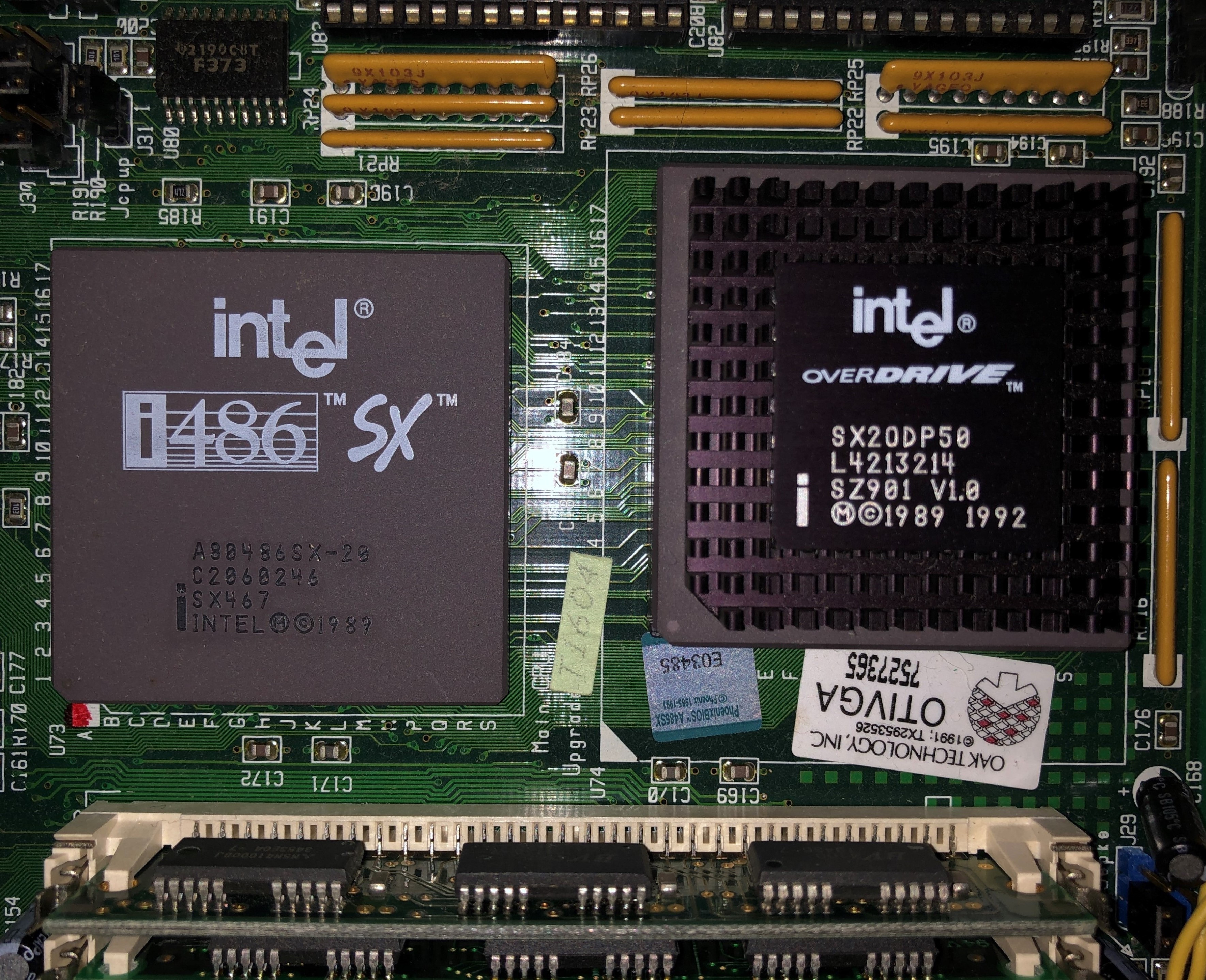486 OverDrive on:
[Wikipedia]
[Google]
[Amazon]

 Intel's i486 OverDrive processors are a category of various
Intel's i486 OverDrive processors are a category of various

 Intel's i486 OverDrive processors are a category of various
Intel's i486 OverDrive processors are a category of various Intel 80486
The Intel 486, officially named i486 and also known as 80486, is a microprocessor. It is a higher-performance follow-up to the Intel 386. The i486 was introduced in 1989. It represents the fourth generation of binary compatible CPUs following the ...
s that were produced with the designated purpose of being used to upgrade personal computers. The OverDrives typically possessed qualities different from 'standard' i486s with the same speed steppings. Those included built-in voltage regulators, different pin-out
In electronics, a pinout (sometimes written "pin-out") is a cross-reference between the contacts, or ''pins'', of an electrical connector or electronic component, and their functions. "Pinout" now supersedes the term "basing diagram" that was the ...
s, write-back cache
In computing, a cache ( ) is a hardware or software component that stores data so that future requests for that data can be served faster; the data stored in a cache might be the result of an earlier computation or a copy of data stored elsewher ...
instead of write-through cache, built-in heatsinks, and fanless operation — features that made them more able to work where an ordinary edition of a particular model would not.
Each 486 Overdrive typically came in two versions, ODP and ODPR variants. The ODPR chips had 168 pins and functioned as complete swap-out replacements for existing chips, whereas the ODP chips had an extra 169th pin, and were used for inserting into a special 'Overdrive' ( Socket 1) socket on some 486 boards, which would disable the existing CPU without needing to remove it (in case that the existing CPU is surface-mounted). ODP chips will not work in Pre-Socket 1 486 boards due to the extra pin. The ODP and ODPR labeling can be found in the CPU's model number(i.e.: DX2ODPR66).
Models
Models available included: * 20 MHz FSB, 40 MHz core * 25 MHz FSB, 50 MHz core * 33 MHz FSB, 66 MHz core * 25 MHz FSB, 75 MHz core * 33 MHz FSB, 100 MHz core Two P54 core Pentium-based CPUs were released for 238-pin Socket 2/Socket 3
Socket 3 was a series of CPU sockets for various x86 microprocessors. It was sometimes found alongside a secondary socket designed for a math coprocessor chip, such as the 487. Socket 3 resulted from Intel's creation of lower voltage microproce ...
-based systems, for more information, see Pentium OverDrive The Pentium OverDrive was a microprocessor marketing brand name used by Intel, to cover a variety of consumer upgrade products sold in the mid-1990s. It was originally released for 486 motherboards, and later some Pentium sockets. Intel dropped the ...
See also
*RapidCAD RapidCAD is a specially packaged Intel 486DX and a dummy floating point unit (FPU) designed as pin-compatible replacements for an Intel 80386 processor and 80387 FPU. Because the i486DX has a working on-chip FPU, a dummy FPU package is supplied to ...
80486 OverDrive
Coprocessors–
{{Microcompu-stub